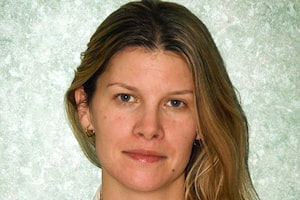Lori Turnbull is the director of Public Administration at Dalhousie University and deputy editor of Canadian Government Executive magazine.
On the surface, it can be said that Justin Trudeau and his Liberal Party won the election on Monday night. He is still the prime minister and the Liberals – with a plurality, but not a majority, of seats in the House of Commons – will look to form the government.
Perhaps it is his celebrity status that has coated Mr. Trudeau’s political career in Teflon, but his opponents could be forgiven for agonizing over what – if anything – could bring him down now. The SNC-Lavalin scandal, the blackface and brownface revelations, the infamous broken promise on electoral reform, the uncertainties surrounding the Trans Mountain pipeline and his government’s limited progress on reconciliation with Indigenous people and on environmental protection have all, at different times, loomed as seemingly fatal threats. Yet his Liberals live to fight another day.
But they lost a lot too. They lost their majority control over the House of Commons, which means they will need at least one partner to move their agenda forward. They lost some high-profile caucus members, including veteran MP Ralph Goodale, and they lost the popular vote to the Conservatives. No question, it was a good night for the Liberals – but two-thirds of Canadians voted for another party.
That, however, is the story of this election – nearly all the parties can claim to be winners and losers, simultaneously. Excepting the Bloc Quebecois, who won enough seats to return to official party status, and the People’s Party of Canada, which just straight up lost, with leader Maxime Bernier failing to win his seat in the Quebec riding of Beauce, there were ups and downs for all involved. Yet despite the politicians’ and pundits’ claims that this suggests a more polarized country, it’s actually more reflective of a divided parliamentary system.
The Conservatives won the popular vote, but that doesn’t make much difference in a parliamentary system where first-past-the-post dictates seat share. Leader Andrew Scheer can be credited with raising the party’s seat count from where it was at the time of the House’s dissolution and for reducing the Liberal government in the face of the fact that Canadians have only once removed a first-term majority from power. But these results are surely a disappointment given the factors that have taken the shine off of Mr. Trudeau. Many felt that this was Mr. Scheer’s election to lose. Can he ever “win” an election in the sense that Mr. Trudeau has, if he didn’t manage to do it now?
Jagmeet Singh entered the campaign with low expectations. It took him more than a year to get a seat in the House of Commons following his rise to the leadership of the New Democratic Party, and his resulting low profile stifled his political growth. His performance in the general election campaign raised expectations considerably, as he was often cited as the only leader with a positive attitude in a highly negative campaign. At the end of the night, however, the NDP actually lost 15 seats from where they were at dissolution – including the Quebec riding of Berthier-Maskinongé, which had been held by the very popular MP Ruth Ellen Brosseau.
Elizabeth May’s Green Party managed to grow its seat count to three, but one has to question why the party’s gains were not more significant in what has been called the “climate-change election.”
At a glance, with five different parties (and one independent, in Jody Wilson-Raybould) set to occupy the 43rd federal parliament, the country seems polarized. But a deeper look suggests another narrative: it’s just a divided party system. The left-leaning Liberals, NDP and Green Party captured 184 seats and 56 per cent of the popular vote among them. It’s time to wonder if all this political branding needs to exist, especially if it gives the impression of a divided, dissatisfied country.
How much of this is the failure of the parties themselves? In a country as large and diverse as Canada, the most important role for political parties is to bring us together around the values and priorities that resonate widely. And public-opinion polls indicate a consensus among Canadians on those priorities, including affordable living and climate change. But our system offers too many choices – not in terms of ideology or range of solutions, but of people and brands. That’s a good thing for politicians but a bad distortion of the country’s reflection, to the extent that we use Parliament as a mirror. There needs to be a way for the five parties to concentrate their efforts.
Canadians know what we want, for the most part. Our politicians just need to figure out how to get there themselves.
Keep your Opinions sharp and informed. Get the Opinion newsletter. Sign up today.
 Lori Turnbull
Lori Turnbull